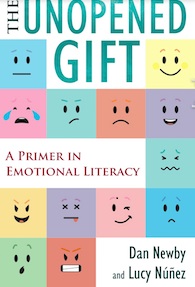Psychological Triggers To Convert Subscribers Into Coaching Clients
In today’s guest post, Client Acquisition Strategist, Davis Lin focuses upon the popular question of how to get coaching clients, specifically looking at:
Psychological Triggers To Convert Subscribers Into Coaching Clients
by Davis Lin

To turn your ideal clients, who do not yet know about you and your service, into paying clients for your coaching business, there are just two steps:
Step 1: Capture the attention of your ideal clients and get them as email subscribers
Step 2: Build a relationship with them, and turn them into coaching clients
Now that you have already gotten them as subscribers, you have already won half the battle. By now, they would already know what it is that you do, and you have also piqued their interests a little on how you can help them get the results they want.
The next step is to compound the value you give through your email sequence, and to do that you have to know how to pull the right psychological triggers to get them to sign up for your coaching.
As such, here are 4 psychological triggers you can start using today to turn your subscribers into paying coaching clients.
1. Make Problems Urgent
One of the most common concepts of human behaviours is that we are driven by the need to avoid pain and to gain pleasure. However often time, the desire to avoid pain is greater than trying to gain pleasure.
For example, I always wanted to go to the gym on a regular basis to help myself keep fit and look good, so I would set a regime to go to the gym at least two to three times a week. At first, I was able to stick to this regime for a couple of months. But as time went by, I found myself skipping gym more and more until I was only going just once a month.
However, just only a few months later, something happened that made me go to the gym every single day without fail. That was when I began to show symptoms that resemble those of diabetes. I started to fear I might actually have diabetes, and this fear led me to research everything I could on diabetes. Through my research, I found out that exercising would be the best way to lower the blood sugar and hence keep the disease at bay. Because of that, I started to go to gym again every single day without fail for a month, even when I didn’t know for sure that I had diabetes!
Fortunately, after several tests and doctor visits, I was relieved to know that I didn’t have diabetes at all. All of a sudden, the urgency to go to the gym every single day was no longer there. As you might have guessed it right, I went back to going to the gym only once or twice a month subsequently.
You see, the main reason why people come to you is because they have a problem they want to solve. However, not many people may realise the actual weight of their problem and the consequences of not resolving it. As such, they do not feel the urgent need to take action and get their problems solved immediately.
This is where you as the coach need to let them realise the weight and urgency of their problems. You do that by targeting and agitating the big pains they are going through, and highlighting the consequences of not having their problems solved.
For me, it was when I realised that I might have diabetes, and the possibility of me not being able to look after my family. The thought of that was so painful that it made me want to urgently do whatever I could to prevent it from happening.
This is also how you want to let your subscribers feel about their problems as well. So, understanding the exact pains and problems that your ideal clients are going through is important to get them to want to take action.
When they realise the urgency of their problems, and know that not resolving them will cause immense pain, it will compel them to seek a solution. And that’s where you come in.
2. Give Hope
Now, that you have agitated the pains your subscribers are going through, and have let them see that they need to take action, they now yearn for a solution.
It has been said that “when there is no vision, the people perish”. Even one of the most popular quotes in Star Wars is “Rebellions are built on hope”.
Hope is a very powerful emotion. This is why you want to give hope to your subscribers through a step-by-step solution that takes them from where they are right now, to where they want to be.
When you present your solution in a step-by-step fashion, it shows your ideal clients a clear roadmap to their destination, and it gets them excited with the idea of getting the results with your help and coaching.
It will also allow you to be seen as an expert with the knowledge and know-how to help them with their problems and guide them to where they want to be.
For example, if you are a career coach who helps stay-at-home mothers get back to the corporate world after many years, you can talk about the steps they can take to go from homemaker to a highly desirable job candidate for the job they want to apply.
By doing this, it gives clarity, confidence and hope to them that it is entirely possible to make it happen.
Hope is a strong motivating factor in making a buying decision. Because if we don’t first believe there is a possibility to get our problem solved, we would never engage the service of the coach.
3. Inspire With Proof
After showing them the step-by-step solution, you want to back it up with proof that it actually works. That is why social proof is an important element in getting your ideal clients to sign up for your coaching. In fact, it is one of the six principles of persuasion in Dr. Robert Cialdini’s book, Influence.
And the best way to do this is by sharing with them all the case studies and success stories of your previous clients. When you detail the case studies and success stories of your previous clients, it will let your subscribers see what is possible for them if they work with you.
The more detailed you are in the case studies, the more it can help your ideal clients relate with your past clients.
For example, if you are a relationship coach that helps people with their love life, you can talk about the problems that a past client went through, and how they eventually overcame them with your coaching. So, when people with very similar problems see what you had done for your past clients, it would give them the confidence that their problems can too be solved by working with you.
Furthermore, it holds more credibility and trust when the recommendation comes from other people, especially people who were once in a similar situation as them.
But what if you’re just starting out and don’t have any clients yet?
Then, what you can do is to show a case study of how you personally overcame a problem that many of your ideal clients are facing, and then show how you got to where you are now. It is equally powerful, if not more powerful, because it shows that you too have experienced the same problems as them and they would be able to relate more to you.
When you are able to show case studies, it inspires your ideal clients to see that if it’s possible for others who were once in a similar situation, then it’s possible for them as well. Because of that, it will get them compelled to get help from you.
4. Overcome Their Fears
Before people make any buying decision, it is common for them to have fears that they might not be making the right decision. This fear arises from unresolved concerns about your coaching offer. So, to help them overcome their fears, you need to adequately address their concerns and objections.
But first you need to understand what their concerns are. One simple way to find out is to ask them. Ask them what is holding them back from taking up your coaching offer. Make sure that you get them to tell you all the objections they have in mind.
The next step would be to address their objections one by one by reframing it. Reframing lets you to use what your potential clients have said to craft your response. This way, it makes it very hard for them to disagree with it.
So let’s say that one of the common objections that you get is that they are busy and don’t have the time for it. Then you can say that you have a coaching package that is specially designed for busy professionals and it only requires very little of their time – one hour each week for them to work with you ( Of course, this has to be true). Out of this one hour of their time, you then emphasize again how much value and benefits they can get from your coaching.
Once you have overcome these fears that the have in their mind, then there would be nothing holding them back from signing up with you.
Building Your Coaching Business For Long-Term Success
Too often, people want to get immediate results from their efforts. That means that if they have a subscriber today, they are hoping they would sign up for their coaching packages by tomorrow. And if that doesn’t happen, they give up on that subscriber and focus on getting more new subscribers, and they wonder why they are not getting more clients.
However, that approach would be too myopic because not everyone is ready at the same time. For example, I had a subscriber who signed up to my newsletter for a year before he became a paying client. When I asked him why it took him a year to join my coaching, he said that it’s because his situation just wasn’t right for him to engage my service at that point in time.
However, because I had continued to give him value each day even after a year, he eventually decided to take up my coaching when his situation allowed him to.
Had I instead just unsubscribed all those that have been on my list for more than a couple of months but never bought from me, then I would have missed the opportunity to get him on as a client.
Therefore, as much as we want our subscribers to become clients as quickly as possible, the fact is that not everyone is ready for your coaching when you want them to be. But if you approach your business with a long-term mindset and aim to nurture the relationship you have with them over time, then you will find that you will be able to sign on more clients from people who have been on your list for a long time.
About Davis Lin
 Davis Lin is a Client Acquisition Strategist and Founder of Client Acquisition Lab. He is very passionate about helping coaches and consultants upgrade and automate their client acquisition process, so they can spend more time doing what they do best – helping their clients, and still get more clients at the same time. To find out more, you can download his Client Acquisition Blueprint for FREE here.
Davis Lin is a Client Acquisition Strategist and Founder of Client Acquisition Lab. He is very passionate about helping coaches and consultants upgrade and automate their client acquisition process, so they can spend more time doing what they do best – helping their clients, and still get more clients at the same time. To find out more, you can download his Client Acquisition Blueprint for FREE here.



 Anna-Marie, a Performance Coach (ICF ACC) and coach supervisor with a serious passion for the outdoors, loves to pop on her walking boots and head out for walking and talking coaching conversations. A former British Army Officer, she has been at the forefront of leadership and personal development for over 17 years supporting high performing individuals across four continents; from snowy Arctic tundra to hot and sandy deserts. Anna-Marie’s core values of growth, balance and energy are reflected in her business Reach for More. where improving yourself is an all-round experience. Anna-Marie is also an elite ultra-runner placing 2nd lady in the “toughest footrace on earth” the Marathon des Sables.
Anna-Marie, a Performance Coach (ICF ACC) and coach supervisor with a serious passion for the outdoors, loves to pop on her walking boots and head out for walking and talking coaching conversations. A former British Army Officer, she has been at the forefront of leadership and personal development for over 17 years supporting high performing individuals across four continents; from snowy Arctic tundra to hot and sandy deserts. Anna-Marie’s core values of growth, balance and energy are reflected in her business Reach for More. where improving yourself is an all-round experience. Anna-Marie is also an elite ultra-runner placing 2nd lady in the “toughest footrace on earth” the Marathon des Sables. For more information on Anna-Marie’s performance coaching and supervision services, visit
For more information on Anna-Marie’s performance coaching and supervision services, visit 



 Anna-Marie is a Performance Coach with a serious passion for the outdoors who loves to head outside for walking and talking conversations with her clients. She is an accredited Analytic-Network (http://www.analyticnetwork.com) and mBraining (
Anna-Marie is a Performance Coach with a serious passion for the outdoors who loves to head outside for walking and talking conversations with her clients. She is an accredited Analytic-Network (http://www.analyticnetwork.com) and mBraining (
 Dan Newby trains and mentors coaches, works with organizations to elevate their emotional literacy, facilitates emotions workshops and is co -author of “The Unopened Gift: A Primer in Emotional Literacy” available on Amazon and Kindle. He lives near Barcelona, Spain and work worldwide with individuals and organizations. He offers on-line training courses in Coaching & Emotions through www.studyemotions.com. If you’d like to contact him directly his email address is
Dan Newby trains and mentors coaches, works with organizations to elevate their emotional literacy, facilitates emotions workshops and is co -author of “The Unopened Gift: A Primer in Emotional Literacy” available on Amazon and Kindle. He lives near Barcelona, Spain and work worldwide with individuals and organizations. He offers on-line training courses in Coaching & Emotions through www.studyemotions.com. If you’d like to contact him directly his email address is 
 Go ahead, grab a paper and pen and jot down the most important characteristics that you would be looking for in this person.
Go ahead, grab a paper and pen and jot down the most important characteristics that you would be looking for in this person. Alison Beierlein has international training and experience and over a decade of experience in business management. She coaches female entrepreneurs in the areas of leadership, empowerment, confidence, business growth, and self-development. Her goal is to empower women to uncover their larger purpose and design clear strategies to help them achieve their full potential.
Alison Beierlein has international training and experience and over a decade of experience in business management. She coaches female entrepreneurs in the areas of leadership, empowerment, confidence, business growth, and self-development. Her goal is to empower women to uncover their larger purpose and design clear strategies to help them achieve their full potential.